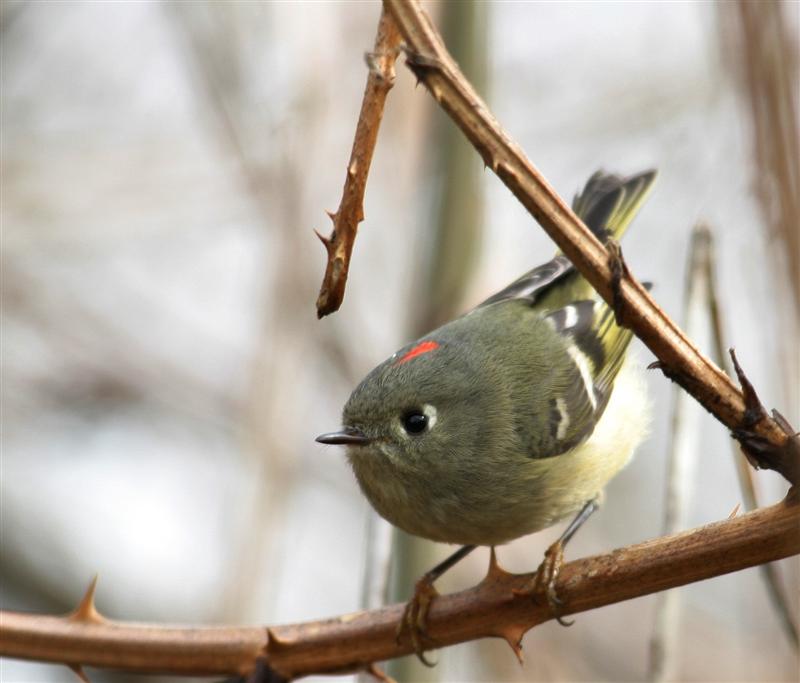
“Listen To My Song” photo by Walter Ammann
One of the best ways to identify birds in the wild is by their calls or songs. Here is the call of the Ruby-crowned Kinglet:
Have you noticed when you are out walking, it doesn’t even matter where you are, you will hear birds calling. You may not see the birds but if you listen closely you will begin to hear many different calls from the birds around you.
One of the most important things you can do to be a satisfied bird watcher is to learn the birdsongs of the birds in your local area. If you have been a backyard birder for very long, you undoubtedly know some of the birdsongs of the birds you have in your own backyard. Your backyard is a great place to start learning the birdsongs of your local birds as well as the birds that migrate through your area during their spring and fall migrations.
During the late fall and winter we birders have it easy. The deciduous trees and bushes lose all their leaves and we can spot a Ruby-crowned Kinglet flittering around the bushes or a Bushtit scampering around in the trees, in the blink of an eye. Then spring and summer roll around and we have to depend on our ears to bring many songbirds into view.
If you think about it, you probably hear birds about eighty percent of the time before you ever see them. When birding a specific area, if you know which species of bird is likely to frequent the habitat you are in, you have a better chance of identifying that species of bird. If you know the calls associated with those species you are likely to find in that habitat, your chances of spotting and identifying the birds in that area multiply many fold.
Just imagine walking through the woods and you hear the high pitched call of the Brown Creeper or the tin horn call of the Red-breasted Nuthatch. You would be much more likely to spot these little guys climbing up and down the tree trunks if you identified their call first so you knew which bird you were looking for and where they were likely to be.
There are so many advantages to learning bird calls for sighted as well as blind birders that I don’t have time to list them all here. I do, however, have some great stories for you to read about blind birders that you won’t believe. The first story is called “Outta Site Bird Watchers of South Texas” and you can get a copy of the article in PDF format right here. This article also has within it a “Blind Birders’ Tip Sheet.” The other story titled “A Sight for Sensitive Ears” is from Audubon Magazine.
I am so inspired by folks in my own Audubon group who can hear birds long before some of the rest of us can that I am working on becoming more adept at bird identification by ear myself. Check at Birds In My Yard for some excellent products to help you learn to “Bird By Ear.”
If you work at it, I know you will be able to hear and identify many more birds when you go birding and you will have a lot more fun too!
Happy Birding









Comments on this entry are closed.
You Sir – have a mighty fine blog going on here! I’ll make sure to come back!
Cheers, Klaus
P.S.: Glad you enjoyed my Egrets. (They are not even my favorite birds – but they sure as heck are beautiful!)
Thank you Klaus! I am looking forward to more of your great photos on your blog.
Just so everyone knows, Klaus’ blog is “Virtua Gallery”. He is listed over in my Blogroll.
What a beautiful call!
I occationally record bird calls when I am alone in a forest.
It is a very engaging hobby.
Hi Amila, I love listening to bird calls wherever I am. Thanks for the comment and sharing the information on the Brown Hawk Owl. I will have to visit Sri Lanka someday to see all your beautiful birds up close and hear their songs!